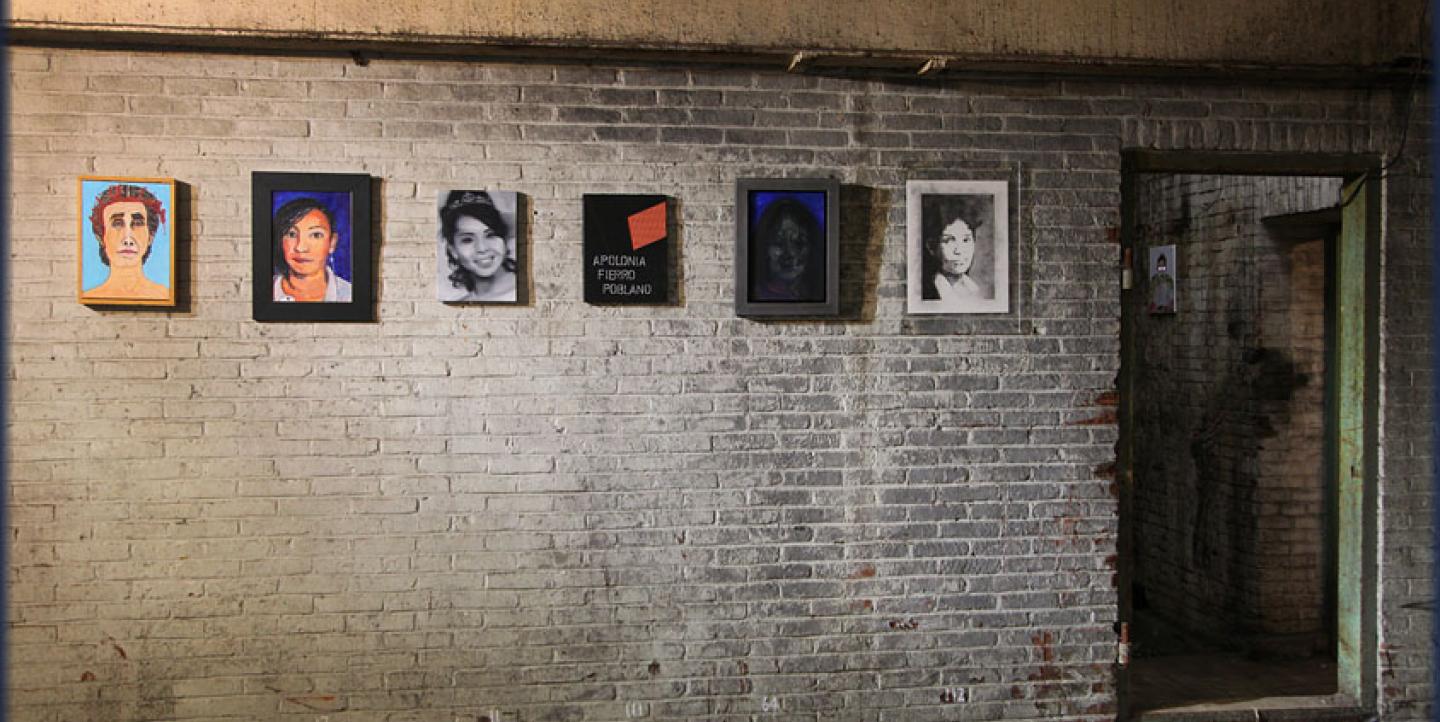If the number of journalists covering violence in Mexico is small - and it is - the number covering violence against women is smaller still. The beat is fraught with danger and is complicated by the fact that so many of its subjects are dead. The ones who are living, both victims’ families and the people who perpetrate violence, aren’t always easy to engage.
Alice Driver, who's reported for Vice, Al Jazeera English and other outlets, knows a lot about this beat; she spent seven years studying feminicide, or violence against women that ends in murder, in Mexico’s Ciudad Juárez. Her book, More or Less Dead: Feminicide, Haunting, and the Ethics of Representation in Mexico, was published by The University of Arizona Press earlier this year.
Driver says that the media are often complicit in perpetuating violence against women, especially in Juárez, typically portraying victims as "prostitutes" or "bad women," just as they are portrayed by the police, and “blaming feminicide victims for their own deaths.”
We spoke with Driver via email about takeaway lessons for journalists.
IJNet: How can your research and book inform the approach and reporting of journalists filing stories about feminicide?
Alice Driver: It should inform the approach to reporting by providing a history of unethical and sexist coverage that feminicide in Ciudad Juárez has received in the past. Somehow journalists, filmmakers, and writers continue to represent feminicide in a sensationalist and sexist way that brings lots of attention to dead bodies and to physical violence but little attention to actually investigating the crimes. The whole point is that we as a society have to stop sexualizing the bodies of women in a way that blames them for their own deaths.
These issues are not unique to Mexico. In 2011, The New York Times published an article on the gang rape of an 11-year-old girl, and the journalist who wrote the article included a quote from those interviewed asking, “Where was her mother?” and stating that the victim “looked older than her years with long hair and dark makeup.” These are the kind of statements that are made about feminicide victims, ones that blame mothers and victims themselves for crimes.
IJNet: How did you frame the subject of feminicide for academic study? What were your research questions?
AD: I framed the issue in terms of analyzing the second victimization – the way the media, both national and international, have  systematically blamed the disappeared and murdered women and their families for crimes. In newspapers, on TV, in films and in books, feminicide victims are often described in physical terms such as the size of their breasts, the type of underwear they wear, or the color they paint their fingernails.
systematically blamed the disappeared and murdered women and their families for crimes. In newspapers, on TV, in films and in books, feminicide victims are often described in physical terms such as the size of their breasts, the type of underwear they wear, or the color they paint their fingernails.
I interviewed photographers, journalists, filmmakers, activists and artists about how to represent feminicide victims in a way that would respect them and their families and bring about justice.
IJNet: What is the current state of reporting on feminicide in Mexico, both when it comes to Mexican media and when it comes to U.S. media?
AD: Both the Mexican media and the U.S. media are starting to give the issue more attention. Vice just produced a documentary on feminicide in the State of Mexico, and in Mexico, Sin Embargo published a three piece series [see part one, two and three here] on feminicide by Sandra Rodíguez Nieto.
IJNet: Is there anything that distinguishes feminicide in Mexico from feminicide elsewhere?
AD: Yes, there are many complex issues at work. First, there is a level of sexism that is a structural part of many major institutions in Mexico (police, army, justice system). I worked in human rights when I was in Mexico City, and after seeing how judges, lawyers and prison guards behaved firsthand towards women and crimes involving female victims, there is no doubt in my mind that women have a much more difficult time receiving just treatment.
Sexism runs deep and prevents women from accessing justice because their voices are often ignored or belittled. In many places in Mexico, women are still limited to primarily domestic spaces, so any time they inhabit public space or suffer a crime in public space, the question is always “Why weren’t you at home with your kids?” or “Why were you walking alone without your husband/boyfriend/etc.?”
IJNet: Any other considerations that are particularly important for journalists? Anonymity of sources? Dangers? How to protect self and sources?
AD: What made my research possible was making local contacts like Julián Cardona, a photojournalist who has been living and working in Juárez for the past 20 years. His knowledge and advice guided my decisions about how to navigate Juárez at a time when it was the most dangerous city in the world.
As for sources, none of mine asked to remain anonymous, but that is probably because I was writing an academic book which has a very small readership and takes years to publish so involves less immediate risk.
Main image CC-licensed on Flickr via Dutch Simba. Secondary image of Alice Driver taken by Luis Garvan.

